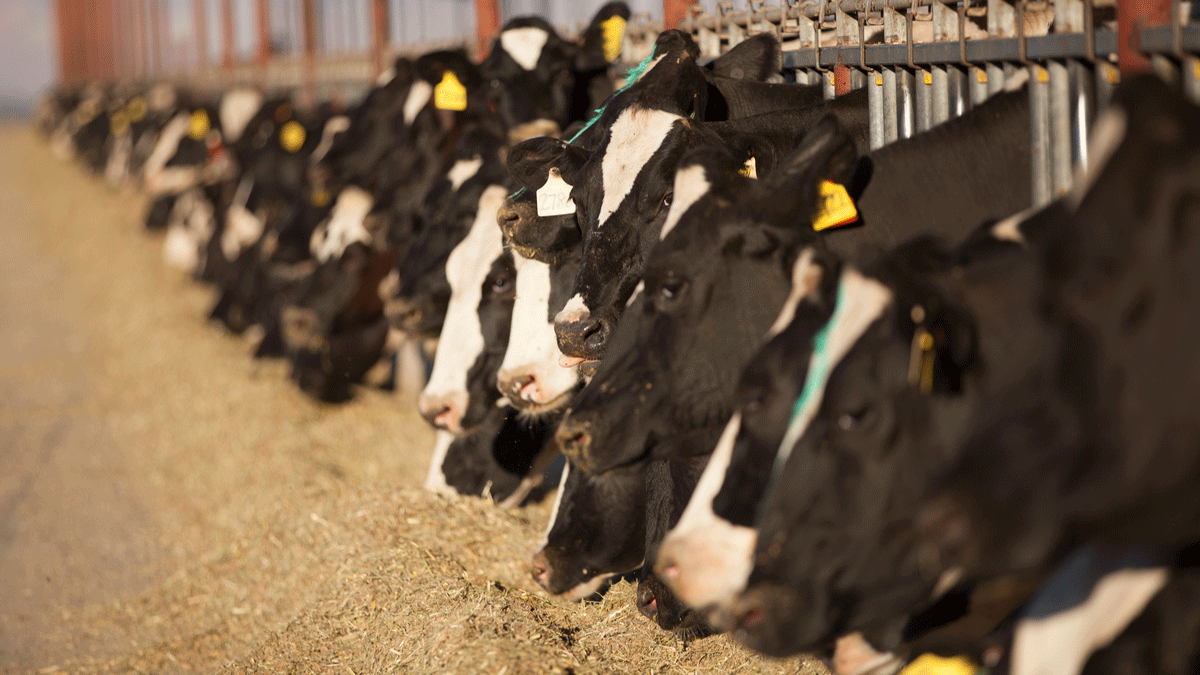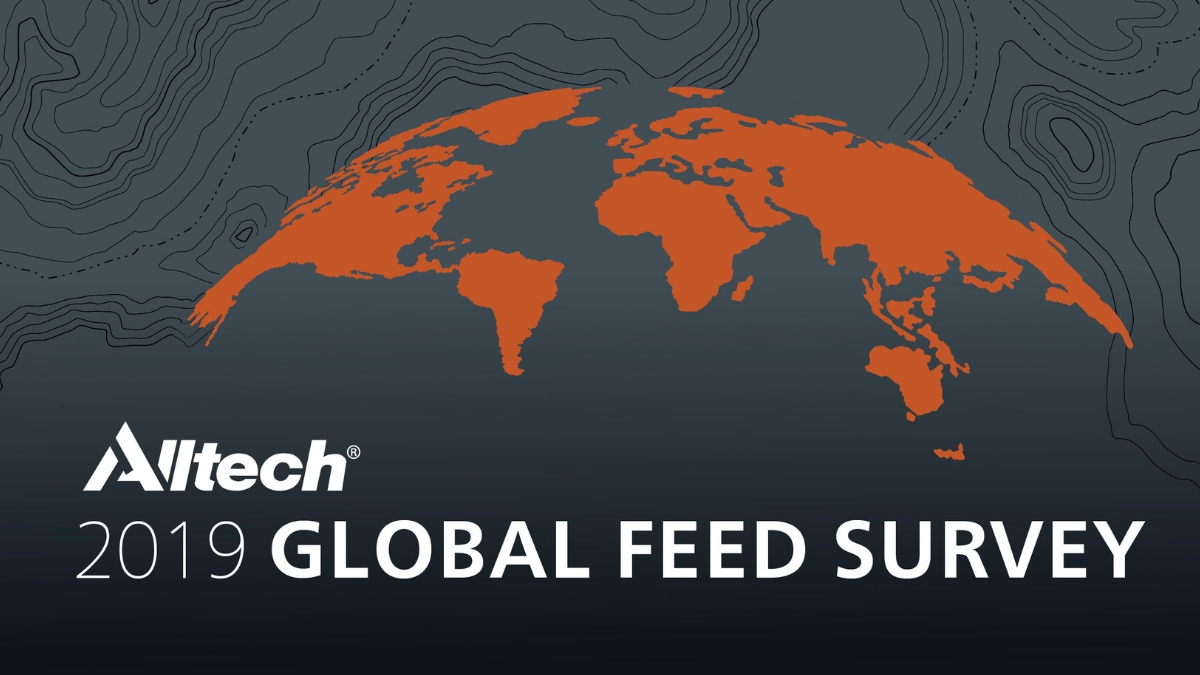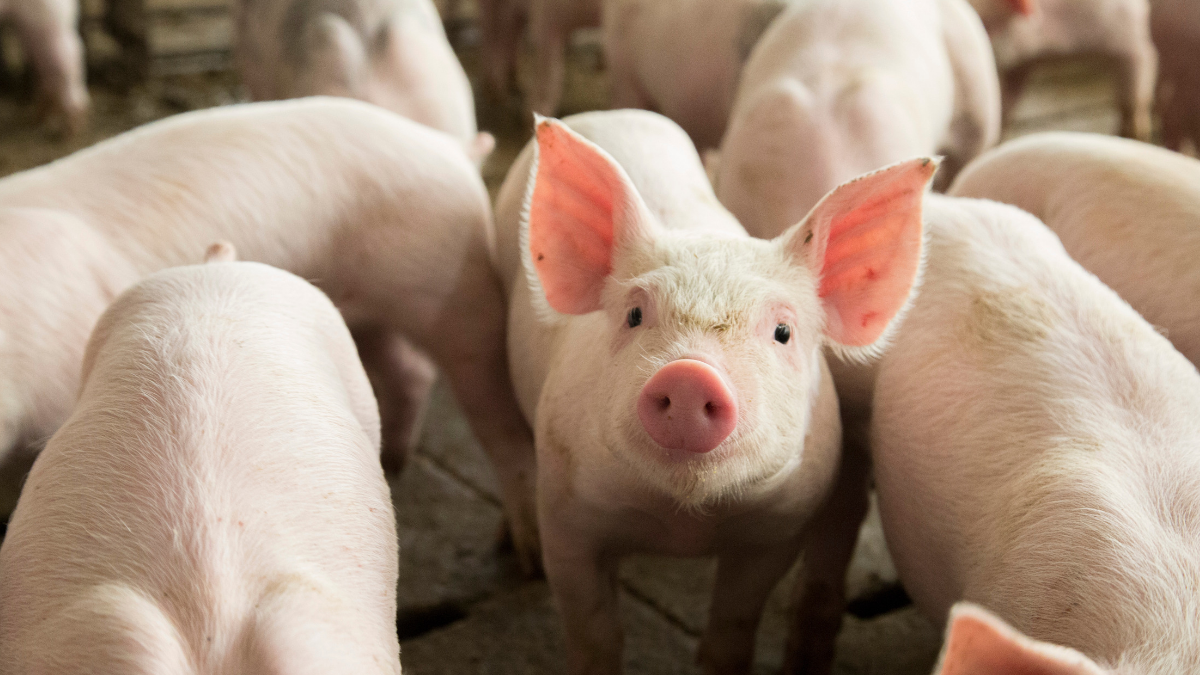The following is an edited transcript of Tom Martin's interview with Dr. Richard Murphy and Dr. Roger Scaletti. Click below to hear the complete audio:
Tom: Why are we still using inorganic minerals? Why do nutritionists continue to overfeed nutrients and waste money? How can a mineral management program improve the health of the herd? Here to discuss these questions, among others, about the role of minerals in animal nutrition are Dr. Richard Murphy, research director at the Alltech European Bioscience Center in Dunboyne, Ireland, and Dr. Roger Scaletti, who focuses on the technical sales and support of the Alltech® Mineral Management program. Thank you both for being with us.
There may be some confusion and contention around the issue of organic versus inorganic minerals and the effectiveness of one over the other. First, Dr. Murphy, a brief primer, if you would, on the difference between organic versus inorganic?
Richard: That's a great way to start this conversation. I guess it's going to be a fun conversation over the next while! Effectively, when we talk about organic minerals, all we've done is taken the mineral source, we've reacted it with an amino acid or a peptide or some other organic bonding group, and we basically make that mineral protected. Rather than thinking about an inorganic mineral as just being straight mineral, with the organic mineral, we've protected the mineral, and that protection offers us a lot of benefits. Particularly in the intestinal tract, it offers us stability — changing the pH that we would see in the gastrointestinal tract.
For instance, at the start of the intestinal tract, the pH is neutral. When it gets into the gastric environment — or the stomach — it becomes very acidic. Those changes in pH can impact amino acid. With the organic mineral, what we're doing is we're bonding it to either an amino acid or a peptide or some other organic molecule, and that protects us as it moves through the GI tract and makes it much more stable.
Tom: Dr. Scaletti, just to be clear, is the use of organic versus inorganic specific to the production method? In other words, are organic minerals only for organic farms?
Roger: Another great question. No, organic minerals would be beneficial for any farm. In a typical presentation, I would start off by saying when I mention organic minerals — I'm not talking about not using pesticides or herbicides — I'm talking about the chemistry of carbon, just like Dr. Murphy mentioned. Remember, there is no real requirement for inorganic trace minerals. Animals need zinc, copper, manganese, selenium, etc. every day, but the source of that trace mineral is not dictated, so organic minerals are suitable for all different production systems.
Tom: Okay, for either of you, has research proven that an organic mineral is more bioavailable and usable by the animal?
Richard: Absolutely. I think Roger would agree. We've got an absolute wealth of information that we've built up over the last 20 years or so showing that the organic minerals are a far superior source of mineral to use in all diets.
Roger: Yes, like Dr. Murphy mentioned, the bioavailability part, I think, is what gets people's attention initially. But then, at the end of the day, the farmer, no matter what species, is looking for a production response. So, we also have research covering production responses that you would see as you change your mineral supplementation from inorganic to organic.
Tom: What is it about organic minerals that makes them more beneficial?
Richard: For me — my background is in biochemistry — it's trying to understand how minerals interact, not just in terms of how the animal responds to it, but how those minerals would interact with feed and materials, for instance. Certainly, with the organic minerals, you have benefits beyond just health and just performance in that we change the way in which we can impact or influence the nutrients in the diet.
With the organic minerals, we know it will have less of an impact on vitamin stability, less of an impact on antioxidant function. Even with some of the enzymes that are part of the gastrointestinal and digestion process — they won't be as impacted by organic minerals as they would by inorganics.
Roger: Then, to follow a little bit with Dr. Murphy's comment, some of the, for example, enzyme interaction work that we've done in vitro has been done in dairy cows as well, showing that, when you're only supplementing with organic minerals — in our case, Bioplex® and Sel-Plex® — you have a more effective rumen fermentation. So, you're producing more total volatile fatty acids and more butyrate, which is kind of the business of the rumen: to produce those volatile fatty acids. Whether it's a case of the organic minerals enhancing that or leading to accelerated rumen organism replication, it's one possible pathway, but I think another possible pathway would be that you're removing rumen microorganism inhabitation when you take out the inorganic minerals.
Tom: Which trace minerals are key to improving livestock performance? Is there a shortlist?
Roger: The shortlist would be zinc, manganese, copper, cobalt and selenium. Depending on where you are in the world, or even within a given country, one of those may be more important than another one. In North America, our most important mineral for supplementation and consideration would be selenium, just based on the background selenium in soil, which is going to dictate the selenium in forages and grains. Those five would be the main ones. On the monogastric animal, we would add iron to that. We have six minerals we'd be talking about.
Tom: We may have touched on this a little bit before, but what is known about the utilization of the minerals by the animal — or animals, I should say?
Richard: Well, minerals themselves are used in many different ways. Predominantly, when you look at their role in cellular systems, they're essential co-factors for many different enzymes, for instance. You won't get cellular processes working optimally or working efficiently if you don't have the necessary mineral required for the enzyme to carry out its function, or for the enzyme that's necessary for those biological functions.
They're wide-ranging. If you look at copper, for instance, it's involved in many different enzymes that are involved in the antioxidant response. Selenium is a particularly important one in terms of its ability to modulate, not just in antioxidant response, but in many other enzymes that are involved in many other processes as well. So, really, they're essential and critical for the most basic of cellular functions.
Tom: Are there differences in animal chemistry species to species, or even within species, that cause mineral forms to perform differently?
Roger: My answer — and this would be more in Richard’s wheelhouse — but just in a ruminant, we have to deal with the rumen, the rumen environment, the rumen microorganisms. In other species, you wouldn't have the rumen part. In equine or in horses, they would have a hindgut fermentation. There’s a difference in terms of how each animal is set up, but for the most part, you're seeing the similar benefits from organic minerals across the species.
Richard: There is one common factor across all species — we touched on this at the start — which is that change in pH along the length of the GI tract. That's one of the most critical parameters that is involved in defining how good or how poor a mineral source is. If that mineral source is enabled to withstand those constant changes in pH, you won't get it to the sites of absorption in the intestine. You really need to look at having a stable mineral molecule. Obviously, organic minerals are the most stable of those. But even within the different types of organic mineral products that are out there, you'll see distinct differences in terms of the stabilities of individual products, and that will have an impact on how individual products will function in the animal.
Tom: Why do organic trace minerals mean less inclusion, less waste and better meat quality?
Roger: Well, to me the starting point would be that you don't need as much mineral to get the job done. Corollary to that, you're getting a more effective job done with organic minerals. I think, over the years, in the industry side of things, it's kind of been a race to the top. One company was using however many PPM [parts per million] — or milligrams — of a mineral, and the next company would add a little more to it, operating under the old adage of more is better.
Well, that's really not the case. We found, and have the research to show, that you're getting a more effective response with less mineral use, probably through a lot of the pathways Dr. Murphy mentioned, but it's not always an apples-to- apples comparison. Zinc oxide, at a given parts-per-million, is not going to perform the same as a zinc proteinate, or Bioplex zinc, at a much lower concentration inclusion in the diet.
Richard: It's actually of interest on the regulatory side — and I think Dr. Scaletti would probably agree with this as well — when you look at changes in legislation over the last number of years, in particular in the EU, there have been changes in the maximum permissible limits that are allowed in feed. I think the zinc — this is just back to Roger's mention of zinc oxide there — I think the zinc area is one in which we can demonstrate that quite nicely. There's a lot of talk in the EU about how they're going to ban zinc oxide use as a prophylactic and prevent scouring in piglets and calves, for instance.
One of the reasons for that that they've quoted is that the regulators are concerned about the impact that zinc oxide can have on co-selection for antimicrobial resistance. But when you look at the permissible limits that they have of zinc in feed, they make reference to the use of phytase, for instance, as being a way to perhaps enhance the effectiveness of the zinc source that's added to the diet or enhance the background level of zinc that's in the feed.
All in all, I think there's a move by the regulators. Now, the regulators, if they want to change those limits again, will have to come back and revisit the delineation between inorganic and organic minerals and the differences in terms of the bioavailabilities of those. I think, in the future, we may even see regulators like the EU body — which would be the EFSA (the European Food Safety Authority) — would say, “Okay, we'll need to examine this in more detail.”
Certainly, the Brazilian authorities have already done that. They've made a clear delineation between the availability of inorganic and organic mineral sources. The more recent documents that have been published by authorities in Brazil basically delineate clearly between what levels of inorganic you should feed in a diet and what levels of organic you should feed in the diet, and they're distinctly different.
Tom: As you have observed improvements in performance, are there any lessons? Any takeaways from that experience that have informed what you do going forward?
Roger: I would say: more isn't better. I think a lot of people are accustomed to looking at a tag or a ration report, and they're looking for a certain number or level of mineral supplementation. That's only so useful if you, then, don't read the ingredient list and see, is it coming from oxide, sulfate, organic proteinate — whatever the case may be. I think the source of mineral is more important than the amount. So again, it's about making sure it's an apples-to-apples comparison, and less doesn't mean less performance. I think a lot of times, at least in the United States, our industry would be looking for high levels of supplementation, and they equate high level with being good or what is essential, and that's not really the case.
Richard: Just to add to that as well, Dr. Scaletti, I think it's important that the industry really looks at organic minerals and says they're not all the same. There is a misconception, I think, within the industry. You have all these different brand names and different types of organic mineral products. I guess the natural inclination is to say, “Well, it's an organic mineral. One product must be the same as the other.” There are very distinct differences between them.
Again, this is back to that concept of how that mineral source interacts or how stable it is as it moves through the GI tract. Certainly, in some of the work that we've seen from the team at our European Biocenter in Ireland, we've basically shown there are very distinct differences in terms of the stabilities of different organic trace mineral products, and that can have distinct impacts, not just on the bioavailability, but also in which [of] those different products would interact with different premix and different feed components.
Tom: There are some misperceptions out there about minerals. What beliefs are most prominent and how do you address them?
Richard: I think the biggest misconception is with regard to size. That's probably the biggest industry misconception that's there, and that's a historical one. Originally, when organic minerals first became available, they were simply complexes between amino acids, like methionine or lysine, with copper and with zinc. Certainly, people thought, “Well, if you have a small bonding group, then absorption of it is much better or delivery of it is much easier.” That's not the case. What we've seen is that it's the type of bonding group that's used — so, the type of amino acid. But, particularly when you get into peptide-based technologies like we see in Bioplex, it's the actual amino acid sequence in those peptides. So, it's even more fundamental than we would have thought in the past. The configuration and the type of amino acids present in the peptide would very significantly influence the stability.
I think the biggest misconception in the industry about organic trace minerals is that size is important. I can absolutely say with certainty size is not an issue. It's the type of bonding group that's used. And more importantly, when you look at peptides, it's the configuration and the sequence of amino acids that are in the peptide that are of more importance.
Roger: I would just maybe follow up with that in regard to organic selenium. The battle is typically, “What is the content of selenomethionine in a selenium yeast product?” Dr. Murphy would have research showing it's not only an effect of how much selenomethionine you have present; it's how much of that can be digested and released. So, again, just coming back to that concept of “more isn't always better,” especially if what you're supplementing isn't released — or isn't available — to the animal.
Richard: Yeah, that's actually a great point, Dr. Scaletti, just on the organic selenium side. Certainly, in the EU, we've seen newer forms of, again, so-called organic selenium sources being produced and available for sale, and these are actually chemically synthesized selenomethionine and selenomethionine derivatives that are distinctly different and have a distinctly different offering than you would see with selenium yeast products, such as Sel-Plex, for instance.
Again, it's back to the concept of stability. Free selenomethionine molecule is not necessarily the most stable one when you look at again the influences of those processes in the GI tract. So, certainly, even within organic selenium sources, [it’s a] much, much different proposition now with the availability of these newer chemically synthesized molecules.
Tom: Livestock in many parts of the world have been overfed inorganic forms of trace minerals, such as copper, manganese and zinc, to offset their inefficient digestibility. The excess ends up in manure, and levels of these trace minerals have gotten so high that it's actually illegal to spread that manure out in the fields to support growth forages or grain. So, what happens to all of that excess manure? We're stuck with it?
Richard: Well, I guess if we can't spread it, we've got to do something with it, and it looks like we could be. I know from some of the newer technologies that are coming out — some great startup companies that are basically looking at detoxifying heavy metal in soils using microbial-based solutions. So, perhaps, this is one way in which we can look at remediating those heavily contaminated lagoons, if you like.
Other options may be stripping-based technologies. These are basically looking at removing minerals, and this will be costly, Tom, I would have to say, removing mineral with EDTA-based chelation. But, certainly, something has to be done, and I think organic minerals are, without a doubt, one of the solutions to the problem. You can look at adding less mineral, having less runoff and then, obviously, less contamination in those lagoons. Certainly, the drive toward reducing environmental contamination will definitely be driven and solved, without a doubt, by the increased use of organic minerals over the next couple of years.
Tom: In some places, regulation is beginning to force the issue. A number of countries around the world have already passed legislation restricting the use of trace minerals because this overfortification has led to pollution. Do you see this type of legal action as a continuing trend?
Richard: I guess it goes back to the comment I made earlier about the regulations around zinc and zinc usage in feed, but also, then, the impending ban in the EU on zinc oxide as a prophylactic. I think the regulators will take a greater look at the issue, and I think they will certainly have to start making decisions on whether they promote organic minerals as a way in which we can reduce this or not. It's not the job of a regulator to promote a brand of products, but certainly, I think, when you look at the proposition that organic minerals give in terms of being a solution to the problem, they'll have to start promoting the use of organic minerals as a way in which you can add less, not impacting performance, and have much less of an environmental impact.
Roger: I would just say that I think the path forward is just going to depend [on] where you are in the world. I don't know that the United States is looking at any of these zinc, manganese or copper regulations any time soon. Our only regulations in terms of trace minerals would be selenium and the mineral we haven't talked about today: iodine. If you're using iodine in the EDDI (ethylenediamine dihydroiodide) form, there are limits on how much you're allowed to feed. Other than that, selenium would be our only regulated mineral, and today, we could go out and supplement as much zinc as we want in any animal in the United States without a problem.
Tom: Are you seeing growth in the organic minerals market?
Roger: We're seeing tremendous growth, both globally and regionally. In North America, I think, as people realize, again, that it's not an apples-to-apples comparison or you're not just looking at a level of mineral — that you need to pay attention to the form — that people are realizing that organic minerals have an important role. I also think we're getting a little bit closer on the cost difference; inorganic minerals are still cheaper, but their price keeps going up. I don't know that cost is as prohibitive as it used to be, from a practical farm level.
That's probably the only reason people aren't using organic minerals as their only source. It's a cost thing. Now, when you start looking at the response and, then, the return over investment opportunity, well, it's not a cost: it's a profit-maker. So, I think it's just a slow change.
When you look at trace minerals, for 60-70 years, we used inorganic minerals; for the past 20, we've used organic. So, it's still pretty new in terms of what's going on in the general supplementation industry. When you look at some of the different documents out there — for example, National Research Council or NRC Guidelines — they really don't get into a discussion on form. As Dr. Murphy mentioned, the Brazilian government recognizes that there are form differences, and some other countries around the world are starting to do so as well. I still think it’s left to feed companies, nutritionists and, ultimately, the farmer or end user to make a decision of, “Do I want to make an investment? If so, how much?” That's kind of where the decision is today.
Tom: As you continue working toward better performance in animals, are you exploring new ideas for delivering nutrition more efficiently? Is that just an ongoing process?
Richard: Yeah, it's an ongoing evolution. I think we've moved, over the last number of years, more toward, rather than thinking about nutrition as just being an individual component, we've really focused on the benefits of multicomponent packs. Certainly, there are a lot of different synergies you can get from different products present in a pack and the many ways you can get, I guess, good synergism between those components. Certainly, with some of the Blueprint® products that we have in Alltech, we've seen tremendous increases in health or performance and, again, these are multicomponent impacts. Rather than thinking about nutrition as being individual components added together, we tend to think about the synergism that we can get from multiple components out of them. That's something that we'll focus on more and more over the next couple of years.
Tom: This has been really enjoyable. I have one final question: what new developments in minerals or mineral feeding strategies do you think we might see within the next five years or so?
Roger: I don't know if I see a new development as much as just people embracing organic minerals more than they currently do. I'd say, currently, most of the industry would be at some sort of a partial supplementation, where the bulk of the mineral that's being supplemented is inorganic sulfate or oxide, and then they try to come up with how much organic to put in. They want to get all the benefits of organic, but they don't want all the price.
I see more of the bigger advancement being, as people just progress through that decision in their head, from partial replacement to more of the full replacement or total replacement, and realizing that organic minerals are what's doing the heavy lifting – that there really isn't a big need for those inorganic minerals that, for maybe just historical purposes, they just can't seem to kick out of the ration.
Tom: Do you see something in the near future, Dr. Murphy?
Richard: I'd agree with Dr. Scaletti in that. We’re going to see increased awareness in the benefits of organic minerals and how you can use less of those organic minerals and not have a negative impact on health and performance. That, obviously, is going to feed into an environmental benefit. I think we'll also see changes, perhaps, in the way in which we apply these minerals. I think people are looking more and more toward technology as a driver of agriculture.
I think we'll see differences in the next few years in the way in which feed delivery is made, in the way in which you can actually begin to look at delivering feed on farms. I do think we'll see more and more digital-based technologies that will influence feeding strategies, and then, it will obviously influence how we formally feed.
Tom: Dr. Richard Murphy, research director at the Alltech European Bioscience Center in Dunboyne, Ireland, and Dr. Roger Scaletti, who focuses on the technical sales and support of the Alltech Mineral Management program. Thank you both for joining us.
Richard: Thank you very much.
Roger: Thank you.
Drs. Scaletti and Murphy presented their insights during ONE: The Alltech Ideas Conference (ONE18). Don't miss the chance to hear the latest in animal health and nutrition at ONE19. Click here to learn more.
























.png)




